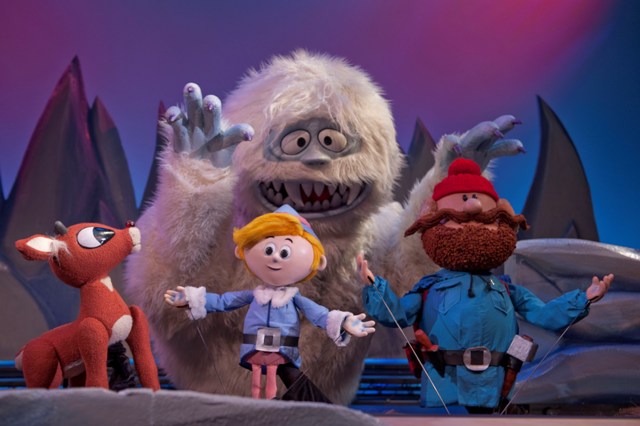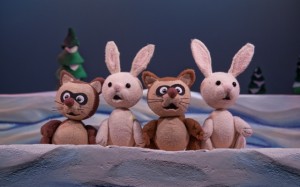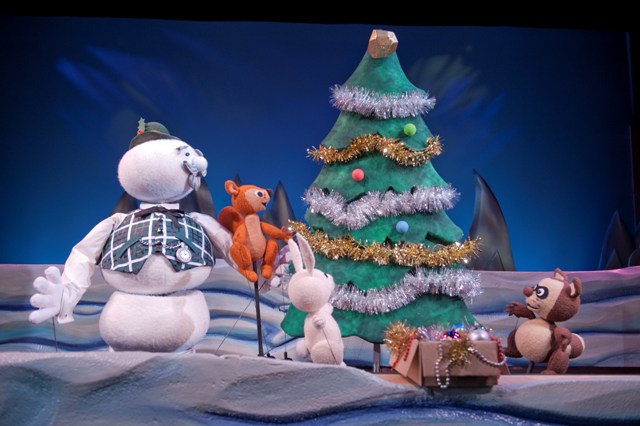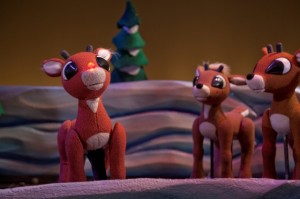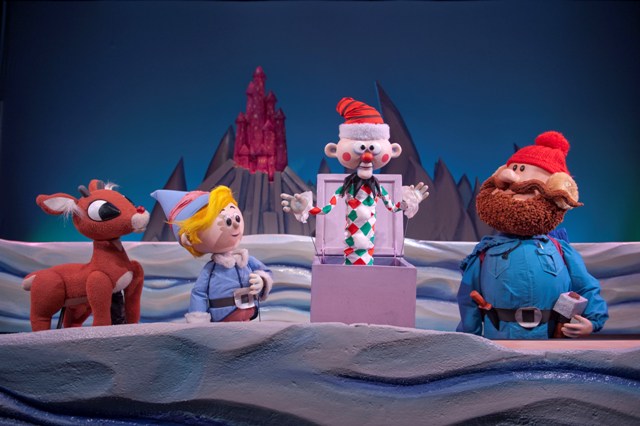 Splatter Cinema Presents GREMLINS (1984); Dir: Joe Dante; Starring: Zach Galligan, Phoebe Cates and Hoyt Axton; Tue. Dec. 11 @ 9:30 p.m.; Sun. Dec. 16 @ 3:00 p.m.; Plaza Theatre; Trailer here.
Splatter Cinema Presents GREMLINS (1984); Dir: Joe Dante; Starring: Zach Galligan, Phoebe Cates and Hoyt Axton; Tue. Dec. 11 @ 9:30 p.m.; Sun. Dec. 16 @ 3:00 p.m.; Plaza Theatre; Trailer here.
By Aleck Bennett
Contributing Writer
One of the most notable aspects of the classic Warner Brothers “Looney Tunes” series of cartoon shorts is that while they were created for the enjoyment of children, they were written to also entertain those parents accompanying their kids to the theater. They’d frequently wink at the audience, breaking the fourth wall and commenting on the ridiculousness of what was transpiring. Few directors have the right touch to pull this off in live-action filmmaking the way that Joe Dante does, and fewer films succeed at this to the extent of GREMLINS.
From his more cartoonish collaborations with Allan Arkush (HOLLYWOOD BOULEVARD, ROCK ‘N’ ROLL HIGH SCHOOL) to his somewhat more restrained horror features (PIRHANA, THE HOWLING), Dante’s modus operandi is to pepper his films with sly humor that acknowledges the fact that we’re all watching a movie. In the hands of some, it could come off as condescending—a kind of “look at us: we’re intentionally making a bad movie, hyuk hyuk!” attitude. But Dante loves this stuff too much to be condescending. In his hands, it all comes across as gleeful subversion; he seems to say that it’s okay to have fun with this medium and the things we love about it. That it’s okay to throw in a special appearance by Robby the Robot for a laugh because who doesn’t love Robby the Robot? That casting Dick Miller in every movie you make and frequently crediting him as “Walter Paisley” (his character from A BUCKET OF BLOOD) is fine, because Dick Miller is a legend and A BUCKET OF BLOOD is fantastic! More than even Tarantino, Joe Dante is the movie nerd’s movie nerd. His films take the attitude that they can have fun with established movie tropes because you should be having fun, and nothing is more fun than the movies.
Which brings us to GREMLINS. Like the classic Warner Brothers cartoons (hey, there’s Chuck Jones in the bar scene!) and Dante’s previous work, it blissfully screws with expectations about what you’re watching. And what it’s playing around with is Steven Spielberg’s E.T. the Extra-Terrestrial. Like E.T., the film is about a small-town kid who winds up taking care of an adorable, otherworldly creature, gets in over his head and madcap antics ensue. The first twist to the formula is that Billy (Zach Galligan), unlike E.T.’s Elliot, is college-aged, pursuing his old high school crush (Phoebe Cates) and still living with his folks. But still, that’s not such a departure that it necessarily alters the story dynamic, right? I mean, after his dad (Hoyt Axton) presents him with a precious little Mogwai named Gizmo, even if he breaks the final two of the creature’s three rules (1. Keep him out of bright lights. 2. Don’t get him wet. 3. Never feed him after midnight.), how bad can it get? It’s a Christmas movie, for crying out loud!
Things can get really bad.
Rather than the film conforming to the E.T. template by having a force from outside threaten the poor little guy and his human pal, and eventually giving us a warm and affectionate send-off, Dante and screenwriter Chris Columbus have Billy make a couple of boneheaded mistakes and potentially doom the entire town. Thanks to Billy, an army of scaly, green and ugly little beasties are running about the place and gleefully killing and eating townspeople just for kicks. Gremlins are gruesomely killed in food processors and microwaves. Phoebe Cates recounts a horrific story about her father’s death. Nobody is safe. It’s almost as if Dante knew that the movie-going public would see Gizmo looking like a little bipedal pug and making high-pitched Howie Mandel noises and generally being so adorable you can barely stand it, and bring their kids to unwittingly witness THE MOST VIOLENT PG-RATED FILM OF ALL TIME. Okay, maybe INDIANA JONES AND THE TEMPLE OF DOOM has it beat, but not by much, bucko. Instead of the heartwarming and heartbreaking farewell of E.T., Billy’s family gets chewed out at the end as a proxy for the entirety of Western Civilization being a bunch of jerks. And all the while, you can practically hear Joe Dante, standing just off-screen, laughing himself half to death.
Predictably, parents were horrified. One of the teachers at my high school refused to let her kids see the film because the Gremlins “were obviously demons from the pit of Hell.” Outrage from Responsible Parents over the violence in this (and yes, in TEMPLE OF DOOM) is what led to the establishment of the PG-13 rating. But kids? Kids ate this up. They ate it up like pancakes covered in ice cream. Because even if the Responsible Parents didn’t get it, the kids did. And the Irresponsible Parents (like mine, bless ‘em) got that this was all a huge, happy joke.
Unfortunately, GREMLINS wasn’t originally released at Christmastime. Fearing that they had nothing to offer for competition during the summer of GHOSTBUSTERS and (again) TEMPLE OF DOOM, Warner Brothers rushed the release of the film and pushed it up by six months. It’s a shame, too, because despite the absolutely epic violence of the film, it’s practically the perfect Christmas movie. Let’s face it: the best Christmas entertainments are fueled by a perverse viewing of Things Going Wrong. Would IT’S A WONDERFUL LIFE be what it is without spending the vast majority of the film watching everything that could possibly go wrong in George Bailey’s life go even worse? Would HOW THE GRINCH STOLE CHRISTMAS be as enjoyable without watching the Grinch attempt to ruin everybody’s life? Santa Claus in MIRACLE ON 34TH STREET may just actually be insane. RUDOLPH, THE RED-NOSED REINDEER runs away from home and hangs out with a bunch of losers and reprobates. There was that YEAR WITHOUT A SANTA CLAUS. It’s not A CHARLIE BROWN CHRISTMAS without watching Chuck’s life spiral into a void of existential dread. Christmas is a time for joy and merriment…and bloodshed and death.
…All of which makes GREMLINS the perfect choice for Splatter Cinema to screen at the Plaza Theatre this month. Even if it doesn’t seem to make sense at first (Spielberg produced it! Its hero is a little fuzzy critter!), sit back and enjoy one of the few Christmas movies to fully embrace the notion that over-the-top violence can be joyful.
Aleck Bennett is a writer, blogger, pug warden, pop culture enthusiast, raconteur and bon vivant from the greater Atlanta area. Visit his blog at doctorsardonicus.wordpress.



